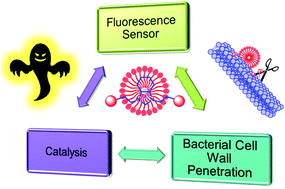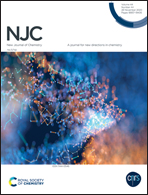Self-assembly of imidazolium/benzimidazolium cationic receptors: their environmental and biological applications
Abstract
Due to the high affinity of imidazolium and benzimidazolium cations to interact with phosphate and sulfate-based anionic surfactants, micelles of different shapes and properties have been constructed by tailoring the design of organic cations and anionic surfactants. Accumulation of a conjugated aromatic system to such kinds of cationic receptors introduces interesting photophysical properties such as aggregation-induced emission (AIE), and aggregation caused quenching (ACQ), which allows them to be used as a sensor and for catalytic degradation of environmental contaminants. The current review will be focused on the design, synthesis, and characterization of micellar structures with various spectroscopic and electrochemical techniques. The applications of the micellar system to the potential future development of sensors are discussed in the context of recent findings of catalytic and sensing activity of cationic receptors. Additionally, the resemblance of these micelles with lipid bilayer structures (phospholipids), and their interaction with the cell wall of bacteria to eradicate the bacteria, is also discussed.

- This article is part of the themed collection: 2020 Focus and Perspective articles


 Please wait while we load your content...
Please wait while we load your content...